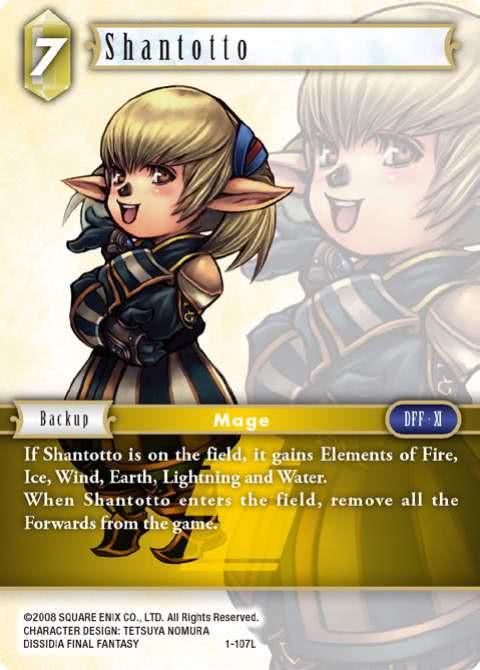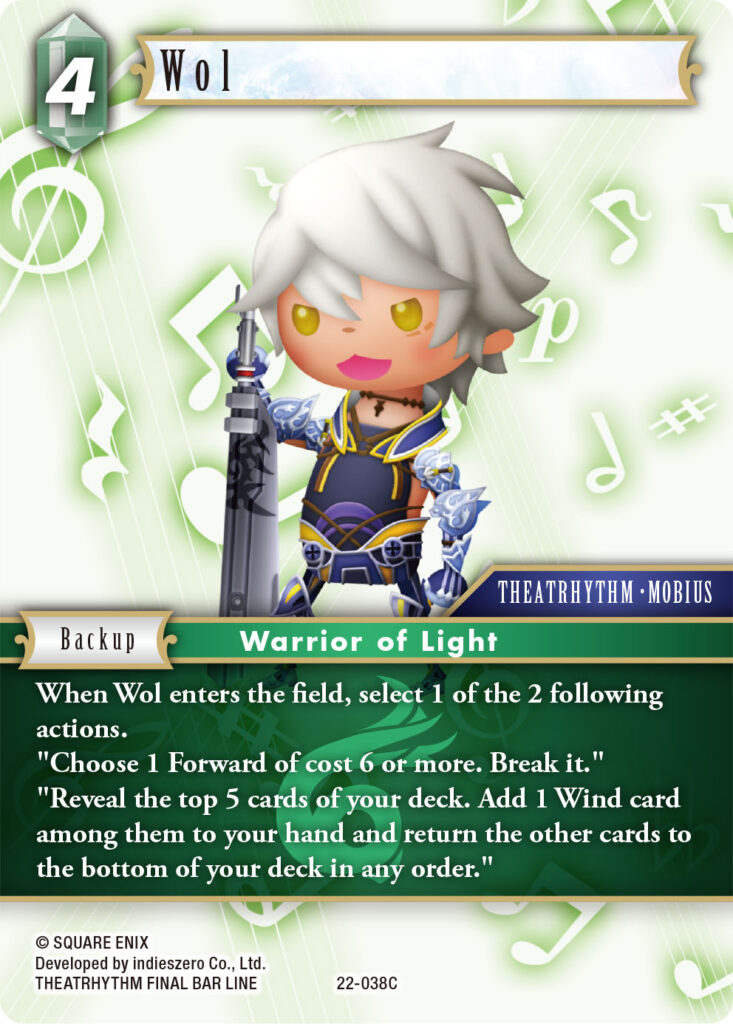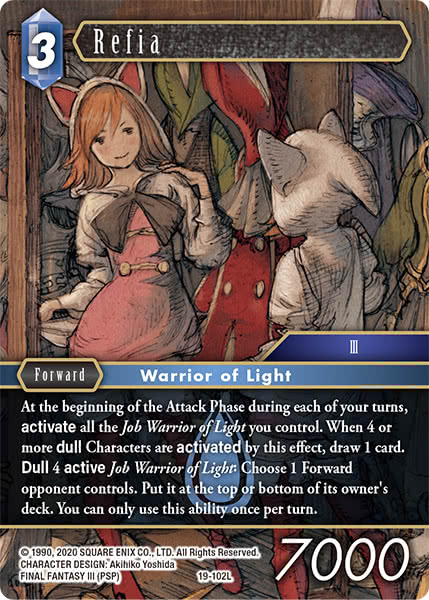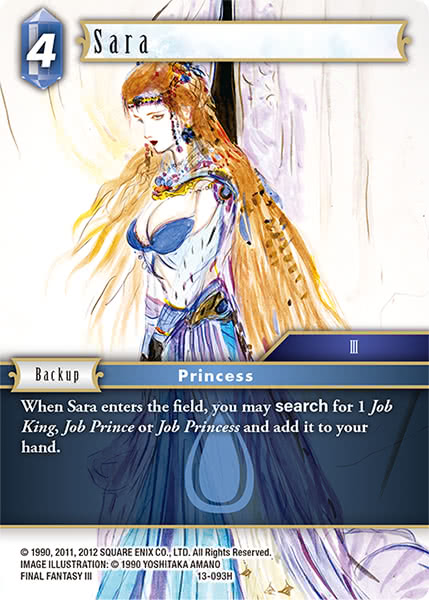Welcome back to the Bear Den! After a brief hiatus to address technical issues with a social media platform, we’re back and ready to deliver top-notch FFTCG content for the 2024 competitive season. Excitement is high within the community, fueled not only by our successful return to competitive play in 2023 but also the announcement of a new mechanic, Limit Break.
In this article, we will take preliminary look at the new mechanic and its anticipated impact on the game. There has already been some great commentary on Limit Break from other content creators that focused on their initial reactions and thoughts. I will link the articles at the bottom of the article for you to read/watch AFTER this one. One thing I love about FFTCG is the great minds/personality share with the rest of us. Truly a one of a kind community.
Alright, if you have read this far, odds are you are interested in what we have to say about Limit Break. While I can honestly say some themes in the article have already been touched on by others, I do think it is worth the read. Plus, there may be something else at the bottom of the article you may want to take a peek at as well :). Alright, no more beating around the push, lets dive into Limit Break and see what all the fuss is about.
What is Limit Break?

This section will be a short refresher but necessary for newer players getting into the game, so if you already know about LB, I give you permission to skip to the next section.
Limit Break is a new mechanic in FFTCG that introduces a “Limit Break Deck” to the game. Each player builds a separate deck of 8 cards that must only contain cards with the “LB” symbol in the top right corner. The deck is completely separate from the main deck, and no card from LB may enter (and remain) in the main deck. All cards will be placed face down, and face-down cards are considered a private zone. The owner may look at their face-down cards but not the opponent’s.
Each LB cost has “Limit Break – X” text that signifies an additional cost that must be paid to use your limit break cards along with the standard CP necessary to play a card. To pay your Limit Cost (X), you flip over X cards in your Limit Break deck. These cards remain in the deck but are considered out of the game. They can no longer be used for play or to pay limit break costs. This means your ability to Limit Break is, well… limited each game, so choose wisely!
If you would like some additional clarity on LB, head over to the official announcement on the official website.
With the basics out of the way, let’s take a look a closer look at how Limit Break will impact the game and why we think they chose to introduce Limit Break now.
General Thoughts
Up first, a personal take on Limit Break and let’s cut right to the chase. I am incredibly excited for Limit Break. Probably the most I have been for a new FFTCG set since…Opus 12 maybe? New mechanics are always great, but it is rare when it has the potential to fundamentally change the game. I can’t help but re-calculate every perceived notion about the game I have. Over the past 6 months or so, I hit a bit of a rut regarding FFTCG. Part of it is life asking more of me than I would prefer, the other is because I have played it since Opus 3/4. Also, the past few sets having strong aggro decks didn’t do me any favors because there is nothing less fun than answering 3 forwards T0 when playing a ramp deck. More of a me problem though :). I have played more games that “its turn 3” and I lost than I care to admit. It really dampened my enjoyment of the game. It is one thing when aggro dumps everything they have and if you stabilize against the first wave, you usually win. It is entirely another when you clear 2 waves, and you are still completely lost. Frustrating times for someone who actually likes backups and it made (makes) the game less enjoyable for me. So, imagine my surprise when Limit Break is revealed and my answers for a slightly less angry meta surfaced.
Limit Break is a fundamental shift in how you evaluate, theory craft, and play FFTCG. In a lot of ways, it *feels* like a new game with the mechanic in play. Having 8 cards at your command, from the very start of the game, can/will have a profound effect on deck construction and what strategies in FFTCG are viable.
We won’t know the full meta game impact until the full set releases and we get to brewing. For all of the theory crafters, this is your time to shine. There has never been a better time to be brewing FFTCG. With so many questions to answer about LB, I would expect brewers to be deep in the tank for a long time trying to figure out decks for the Kansas City Materia Cup in April. Going to be one of the most entertaining streams in a while because everything just feels new and shiny.
However, my inquisitive nature got me wondering…. Why change the game now? We just got back into competitive play. The new starter decks are drawing in new players (slower than I would prefer) and the excitement for the game is on the high-end. Why make such a fundamental shift? Why risk alienating your core group right as you are starting to accelerate your growth? All questions to consider in this case.
Obviously, I have my thoughts on the topic, otherwise, I wouldn’t be writing the article. But I challenge you to stop and think about why such a radical new mechanic now? Draw your own conclusions before reading mine. Let’s see if your great minds match up with my more “mid” mind. (Shout to SE for using “mid” in an official article)
Why Limit Break?
When I sat down and began evaluating Limit Break, I really wondered what the developer’s motivation behind the new mechanic. I get that changing the game up is good for the health of the game as a whole, but I find it fun to try to put myself in the “developers” shoes and see if I can get close. After some thought, I settled on one angle that hasn’t been talked about a lot with other creators and I thought made some sense. But to discuss it, we need to go back to Opus 1.
Since the dawn of the Opera series, FFTCG has been a fairly balanced throughout its evolution. Its eternal standard format has proven successful as the game has slowed crept forward its power level and delivered 21 sets of happiness, joy, and occasionally misery. We are looking at you Gesper. With limited bans, it is clear the developers of FFTCG have really hit their stride in card design and very few cards every warrant the need for a ban. While I personally think there are 2-5 cards that are ban worthy now, it isn’t for their power level as much as their build conformity. More of “why would I do anything else” instead of “this is way too overpowered”. But that is a topic for a different article. Perhaps we will start a “Making the Case” series where we discuss cards and if they should be banned. Stay tuned for that!
The developers have achieved this goal by being conservative between sets, oscillating the formats between combo, aggro, and midrange decks with a dexterity that all game designers should dream to achieve. Each set slowly builds on the previous while constructing new archetypes, often over multiple sets (which I adore) and releasing cards that fundamentally alter the meta between sets. Most brewers call those meta warping cards such Warrior of Light (21-121L) from the recent set. However, there are more subtle power creep on cards that have a more lasting impact on the game. It is this set of cards that I believe drive the core design of FFTCG, and the need of the Limit Break system in Opus 22.
Board Wipes

The concept that I want to talk about is the evolution of board wipes in FFTCG. For those who are coming to TCGs for the first time, board wipes are defined as a single card that can scale its removal value based on the number of threats on the board. Aka it targets the “board” more so than the threats themselves. In FFTCG, that can manifest like “Break all active forwards” or “Remove all Forwards from the game”. It is the “all” keyword that allows the card to scale effectively. These cards are a TCG’s version of the “comeback” mechanic and they are essential to the ebb and flow of the game. If the most popular board wipes are cost ineffective, they prove unable to dissuade players from playing more aggressive decks. If board wipes are hyper cost effective, they discourage playing threats at all as they will just be “wiped” away to cost efficiently. It is this balance, this ying/yang of speed vs efficiency, as the reason I believe Limit Break was introduced.
It is currently my opinion (which means everything ofc) that board wipes are no longer cost effective enough to discourage the recent type of aggro decks that have been formulated. Today’s generation of aggro decks have built-in card advantage in the form of consistent search chains, draw power, and repeatable discard effects. Our current board wipes simply do not have the CP efficiency necessary to compete with the mounting aggro strategies. Now, let me be clear, aggro does not dominate the roost at present across the competitive scene as some would believe. There are absolutely counters/deck designs that can overcome the aggro/aggression that has taken hold the past few sets. However, I do believe we are at tipping point in game balance where aggro can no longer evolve/creep forward without additional balance placed into board wipes/control mechanics. I think everyone would agree that XIII starting their turn, after the first board clear (and 4 points of damage), with 6 cards in hand is….brutal? Is it unstoppable? No. Are you a single bad top deck away from defeat? Most likely.
Now, let me be clear, aggro does not dominate the roost at present across the competitive scene as some would believe.
Accredited to: Me……
I spent a good bit of time reviewing board wipes and their associated value for this article. I am going to release the full data in a separate post someday, but here is the gist: Board wipes have steadily crept forward in efficiency since Shantotto set the standard in Opus 1. This was a slow-moving creep for the first 17 sets or so but has accelerated more recently. This is why you still feel “behind” after Shantotto wipes the board in an aggro matchup, but Shinyru helps you feel like you have stabilized. Why does your game sense tell you that you are still behind even after you wiped the board?
The answer ofc, lies in the CP evaluation. If we do a quick comparison between Shinyru and Shantotto, we quickly realize why the “sense” lines up with the actual CP math. A vanilla 9k body is worth 5CP in Opus 21 FFTCG (Onion Knight (21-065R) says so). So, Shinyru’s 13CP total CP can be reduced to 6CP simply because it leaves a 9k body on the board and gives you a search. Remember, all cards are worth 2CP in FFTCG. Go check out previous article Let’s talk CP: Part 1 – The Basics – The Bear Den for more info. That is 3CP CHEAPER than Shantotto. That isn’t even at full efficiency since you get 3CP more if you play it for its reduced cost. The extra 3CP discount puts Shinyru as the most efficient clear in the game and is why playing 5CP “feels” so much worse.
Additionally, some circles believe that a back-up in play is worth 3CP on average. That makes sense since most backup lines are cards that cost between 2-4CP. So that brings Shantotto down to……6CP which is the exact same CP cost as backup Shantotto. Crazy how that works out. Same effect 20 sets later…for the same cost yet Shinyru is currently superior to Shantotto. To be fair, not all of that is CP math. Forwards are simply better at stabilizing since your opponent now has a threat to deal with and cannot just let Shinyru live due to the repeat of another board clear. It can’t always be about the math.
However, at some point, power creep has to occur to keep up with ever more efficient threats the game can generate.
Enter Limit Break…
OK.OK. By now, you are tired of the backstory and just want to get to Limit Break. If you have read this far and have read up on Limit Break, you probably already know this article’s climax. I believe one of the reasons Limit Break is introduced is to allow board wipes to be cheaper WITHOUT power creeping the main deck. It is the next logical step in the power creep evolution chain that doesn’t require “simply cheaper”. As decks have become more consistent with better search chains and explosive early turns, board wipes are still “random”. Most wipes are hard to search without causing your deck’s core strategy to be less efficient. Limit Break solves this problem by giving players a consistent out or set of effects that will allow you to answer problems. The more board wipes they print with LB, the slower the game will go. Speaking on printing board wipes:


The reprint of Shantotto in the same element, with the same effect slightly buffed felt like pure vindication. They dropped this card during my writing session for this article which was kind of crazy. Let’s take just a couple moments and compare these two cards to see if our assumptions from earlier with Shinyru hold up.
As established before, Opus 1 Shantotto costs 9CP realized. The new Shantotto costs,…..9CP. Since the card comes from the LB zone, it gets a 2CP cost benefit because you are not losing a card in hand. Another, the difference between these two cards comes down to card type. The O22 Shantotto has been changed to a forward. As we established with Shinyru, putting a board clear on a forward has clear cost advantages over a backup. Since a 9k body is worth 5CP, this card gets a 5CP reduction resulting in a blistering efficient 4CP. This is much better than backup Shantotto’s maximum effect cost of 6CP if you count the backup as a 3CP reduction. That puts this card as the most efficient, non-conditional board clear in the game. I think it is worth pointing out that this is more efficient than Shinyru, our current board clear efficiency leader. That is the power creep the game needed, and they did it in a way that doesn’t feel like a design flaw.
Just knowing that your opponent has a potential clear in hand completely changes your decision tree as the opponent. How much CP should I invest in getting them to use their Limit Break? Can I recover if the LB is used? Do I even care and just need to execute my strategy? All of these questions are now going to have to be answered knowing that your opponent has at least 1 built in answer for your threats.
As a deck builder, you also have decisions to make. Do I run more board wipes in my main deck for redundancy or can I rely on the wipes in my LB deck? Can I use those slots for more tech cards or as consistency slots for my strategy? Tons of new and interesting decisions to make just because LB exists.
We won’t know all the answers for a while but the fun is in the journey. I am very excited :).
Other Benefits of Limit Break
There are some additional benefits that Limit Break offers as well that other creators have already touched on. Some of those being:
- Potential to boost EX Bursts by giving you better plays with bad cards
- Updating/pushing archetypes that may not exist in the format
- Expanding the decision tree and forcing new strategies
- Reduction of dead turns due to the name clash rule
All of these reasons are completely valid, and I do not want anyone to think board wipes are the sole reason. I just think it is one of the reasons less explored and thought it would be a good angle for the article. Each one of these has their own impact on the game and deserves its own article. Other creators have done a great job at covering some/all of these, so I encourage you to check them out.
Now, if you have read this far, I have a special treat for you curtesy of Square Enix….
Our Hidden Hope Spoiler

Wol is a 4CP wind backup of category Mobius. It has two pretty good effects that are very flexible the turn Wol comes in. Lets take a quick look at them:
Choose 1 Forward of cost 6 or more. Break it.
Any anti-aggro/early game tempo plays that Wind get is welcome. Wind’s core weakness is heavy aggro in the early game. Lately, those have been in the form of XIII or Rufus/Rug which this card doesn’t help with but the announcement of the new Edea/Ultimecia, Greiver could become an absolute pest. Additionally, this also handles NXD which can be a pest early too as you try to sculp out your backup line to get to your storm turns. It is a great model ability to have. Now for the 2nd one
Reveal the top 5 cards of your deck. Add 1 Wind card among them to your hand and return the other cards to the bottom of your deck in any order.
A classic ability for wind these days. It has no shortage of cards that use this ability to dig into your deck and let you decide on the card you need. That being said, most of those cards for wind are reveal top 3 such as Veira and Kytes which is much different in terms of percentage to top 5. This could enable it to be run in Wind/X decks where the wind cards are the dominate color. You need 30+ targets to get good ratios to craft your deck wisely.
Now, if that was all this card has to offer, I would rate it as average chaff that would only see play in certain metas. However, it has one more trick up its sleeve that give it a real shot to see competitive play. Job Warrior of Light.

Yes, the job that has more support than anything just keeps on getting new pieces. For the longest time, I have wanted to run a Refia (19-102L) deck in Wind/Water only instead of the 3 or 4 colors we are now. Two colors are simply more consistent between games due to variance. Refia is such a powerful payload when online that she is worth building around. With the introduction of this Wol, we have enough redundancy in our backup line now to go Wind/Water. Here are some good options for backups in a Wind/Water deck.





Refia works best when you have 3 Warrior of Light backups on the field to limit the ability to disrupt Refia’s auto ability trigger. Burying a card of your opponents AND drawing a card is a power set of abilities that can really turn the tide of a battle when your back is against the wall. Not only does it extend your turn by getting your CP back, you get another card to play as well.
I am super excited to try this deck out!
Conclusion
Wrapping up, Limit Break has the ability to fundamentally change FFTCG moving forward. Its ability to impact the game in a multitude of ways while giving inherit buffs to board wipes has me incredibly excited for a slight slower meta. With board wipes slowly getting more efficient, this was a great way to push them even further.
Best of luck to all competitive players in the ’24 season. Should be an awesome ride.
And now, I return to my den of hibernation.




